Current Issue
Tokyo in Translation

When immersing oneself in unfamiliar surroundings, sometimes even the tiniest hints of familiarity can be misread.
July 04 2016 1:45 PM EST
May 26 2023 2:22 PM EST
By continuing to use our site, you agree to our Private Policy and Terms of Use.

When immersing oneself in unfamiliar surroundings, sometimes even the tiniest hints of familiarity can be misread.
Courtesy of Daryan Shamkhali.
For three minutes, somewhere in the middle of a recent trip to Tokyo, I was convinced I was a victim of homophobic discrimination. As I stood in the cafe that had become my regular breakfast spot and examined a tempting display of chocolate croissants, an employee behind the counter spoke to me in English. "We're full," she said. "No more room."
I was outraged! If I hadn't felt so bad about not speaking Japanese, I'd have kicked up a fuss. "I've been coming here every day for weeks!" I communicated with a very intense stare. "These croissants are single-handedly preventing me from being able to fit into any of the garments sold in this country. You've happily taken my rainbow yen. Why have you suddenly decided to ban lesbians from your insanely aromatic store?" Then I indicated the table where my girlfriend was taking a seat, said something devastating like "You're not full," and placed a rage-soothing pastry on my tray. (If I was going to boycott the place from here on out, I could at least enjoy one last croissant.)
By the time I got to our table, I was burning with righteous indignation and already planning the bilingual protest sign I would brandish the next morning when I picketed the cafe. That's when my patient, Japanese-speaking girlfriend explained what was really going on: The employee simply thought I'd committed an error foreigners often make in Japan. Whereas most gaijin are used to ordering first and finding a seat later, Japanese customers know they're supposed to grab a table, leave their possessions there, and then go to the counter to make their purchases. My oppressor was just trying to explain the system in her limited English, and I was too stubborn to understand.
Travelers are prone to this kind of misunderstanding everywhere, but Japan, with its ancient traditions, ultramodern mores, and confusing customs, is especially likely to baffle visitors. This is, after all, a land where the rules about where one must take off and put on slippers are more complicated than the Castro District's hankie code circa 1978.
On our first day in Tokyo, my girlfriend and I wandered the streets of Nezu, the charming old neighborhood where we were staying, and discovered the strangest specialty stores. One seemed to sell nothing but scrubbing brushes made, somehow, from turtles. In a window a couple of blocks away we saw padded fabric items that looked like hats for tiny Moroccan tagines. Clearly they were intended to keep one's tea warm.
Several days later, when we eventually went inside the stores and spoke with the owners, we learned that the scrubbers were made from coconuts -- the turtle in the store logo was a pun on the founder's name. And those cup warmers were actually pot holders; they were a different shape from the ones typically found in America, but they served the same purpose. In our defense, we were very, very jet-lagged, but even if we'd been fresh as daisies, I suspect our imaginations would've run wild anyway -- Japan encourages that.
Tokyo is justly famous for its high-tech hypermodernity, but in many neighborhoods, it's easy to step back in time. On our way to the subway, we'd pass a cafe right out of the 1950s. Every morning the owner would arrange a tableau outside the door consisting of several flowerpots overflowing with blooms and a plastic dachshund wearing a jaunty knit hat. Inside, the music consisted of records my grandma used to warm up the gramophone to play for us when I was a child -- the owner had a particular fondness for British singers like Matt Munro and Shirley Bassey. Yet for all these eccentricities, he didn't seem to be consciously creating a camp vibe, and all my attempts to get him to give me a big gay wink failed utterly.
One afternoon we rode the Toden Arakawa streetcar to Minowa -- or "Joyful Minowa," as one English-language banner proclaims it -- where a covered arcade seems to exist in a wrinkle in time. The arcade boasts one of the few ungentrified communal bathhouses left in the city, alongside stalls offering vegetables, fish, and Japanese sweets. There's a stationery emporium, a flower market, shoe stores, and one of the best coffee shops I've ever visited. The owner of Papa Noel buys beans from around the world, roasts them in his tiny store, and brews delicious cups of coffee -- and every minute I was there, I wondered if I had wandered onto the set of a film that takes place in the middle of the last century.
Although we didn't go to any of Tokyo's gay bars, some public spaces were so gender-segregated that I was reminded of my separatist days. A few larger branches of the Japanese design store Muji contain cafeteria-style restaurants, and the clientele of one Muji Meal was so female-dominated, I later asked a Japanese friend if I'd stumbled across a secret lesbian gathering spot. When she stopped laughing, she insisted that I hadn't. I still have my suspicions.
Eight years ago, on my first visit to Japan, I was struck by how much attention the locals paid to foreign visitors. Gaijin attracted stares on the train, on the street, and in restaurants, a curiosity that seemed especially strange when Japanese women wearing kimonos -- gorgeous, outrageously expensive garments -- attracted nary a glance. At first, I wondered if they were looking at me because I appeared to be a lesbian, but that didn't seem to be the case.
During this trip, the only time people stared at us was when we exchanged the universal nod of sisterly recognition with Japanese lesbians. One afternoon, looking for lunch, we wandered into an out-of-the-way restaurant. We were the only women and the only foreigners in the place, and we gradually became aware that the workmen at the next table were talking about us. When one of the group approached, I was apprehensive -- had we breached yet another rule of etiquette that I wasn't aware of? The man handed each of us an individually wrapped rice cracker, said, "Welcome!" and went back to his friends. There was no confusing that gesture.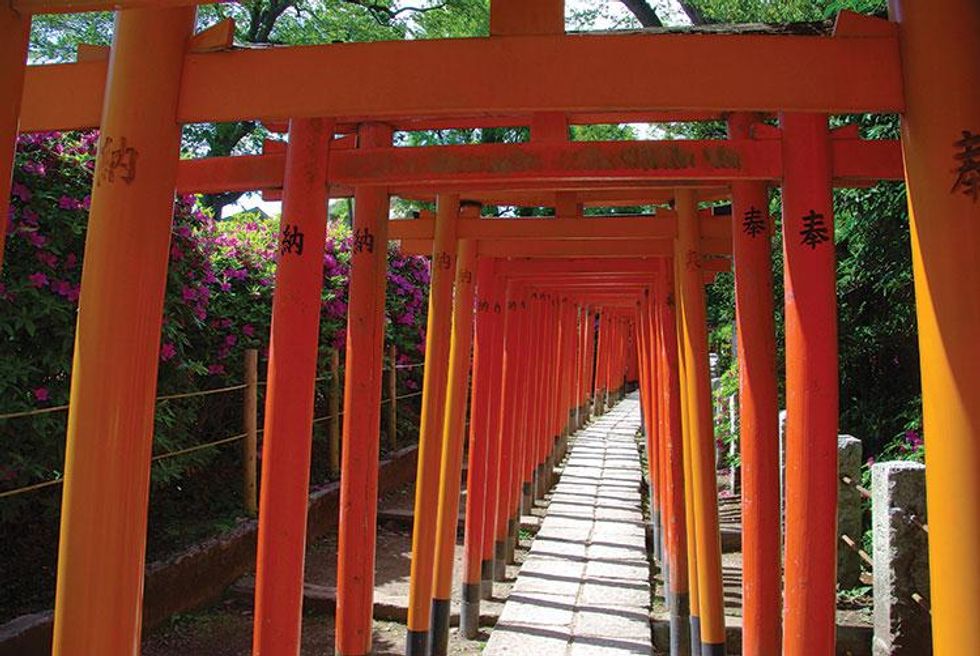
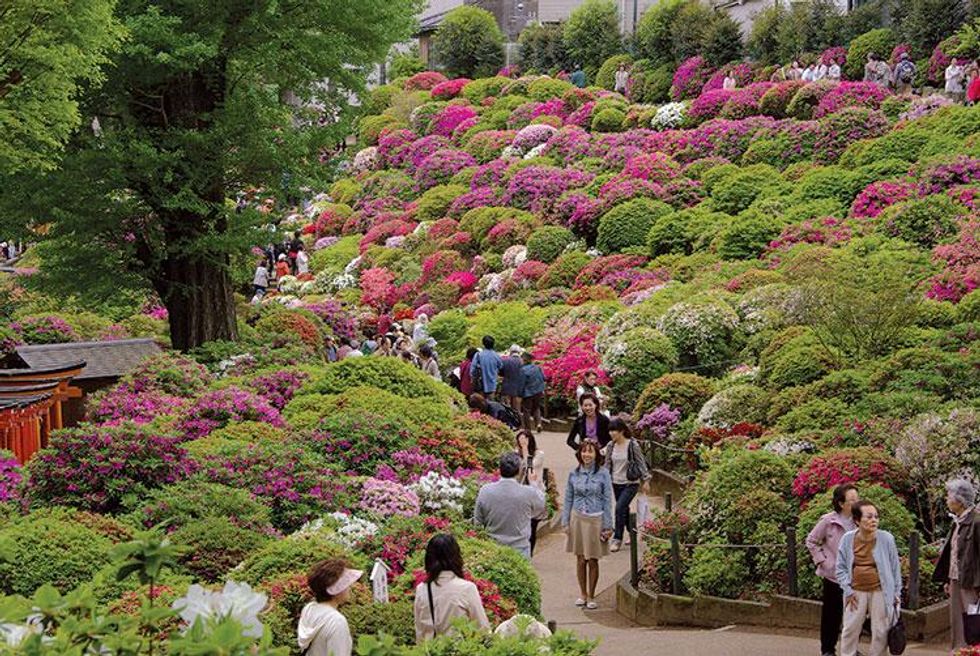
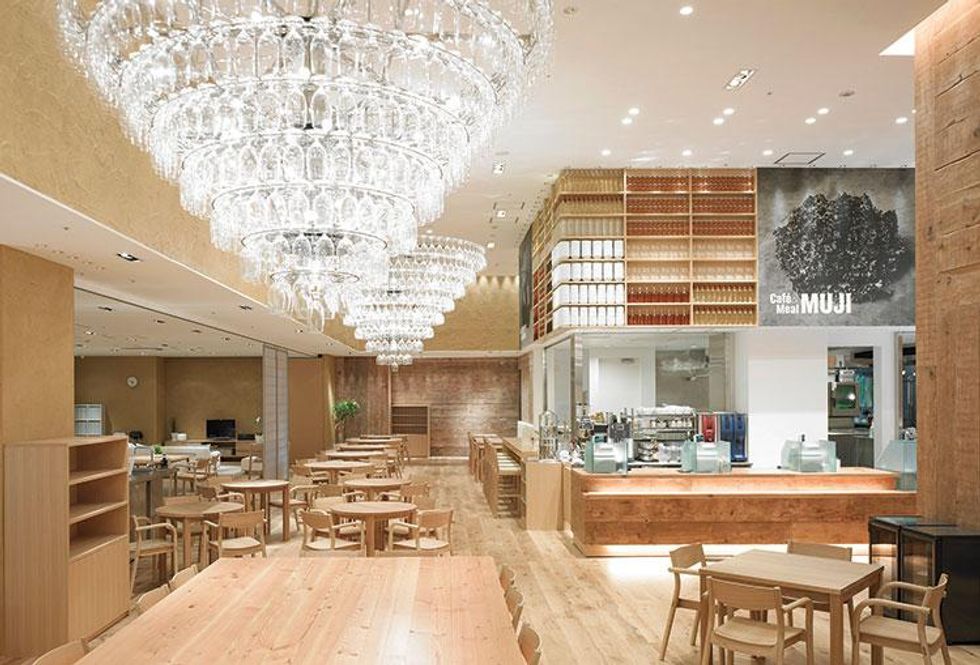
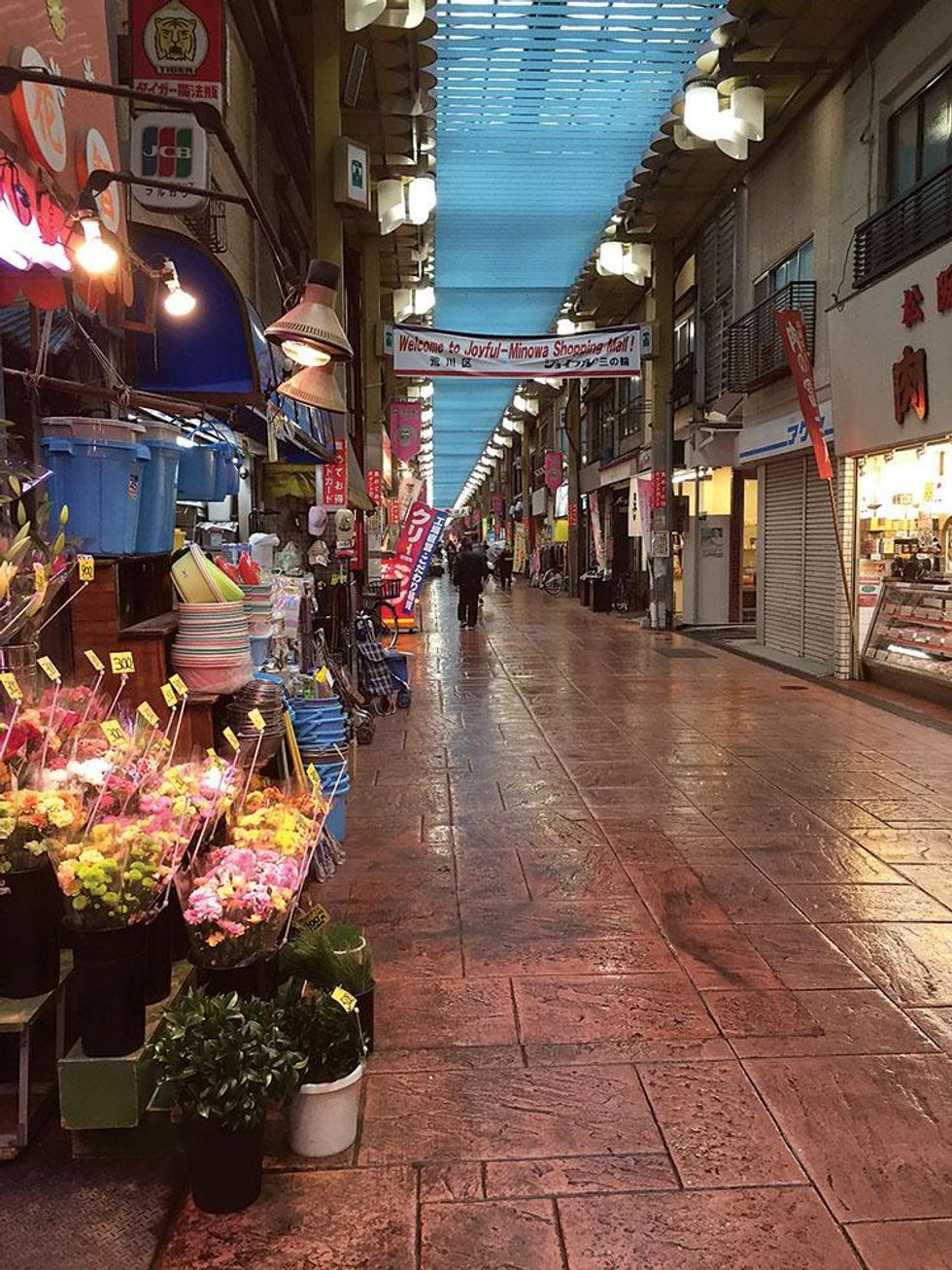
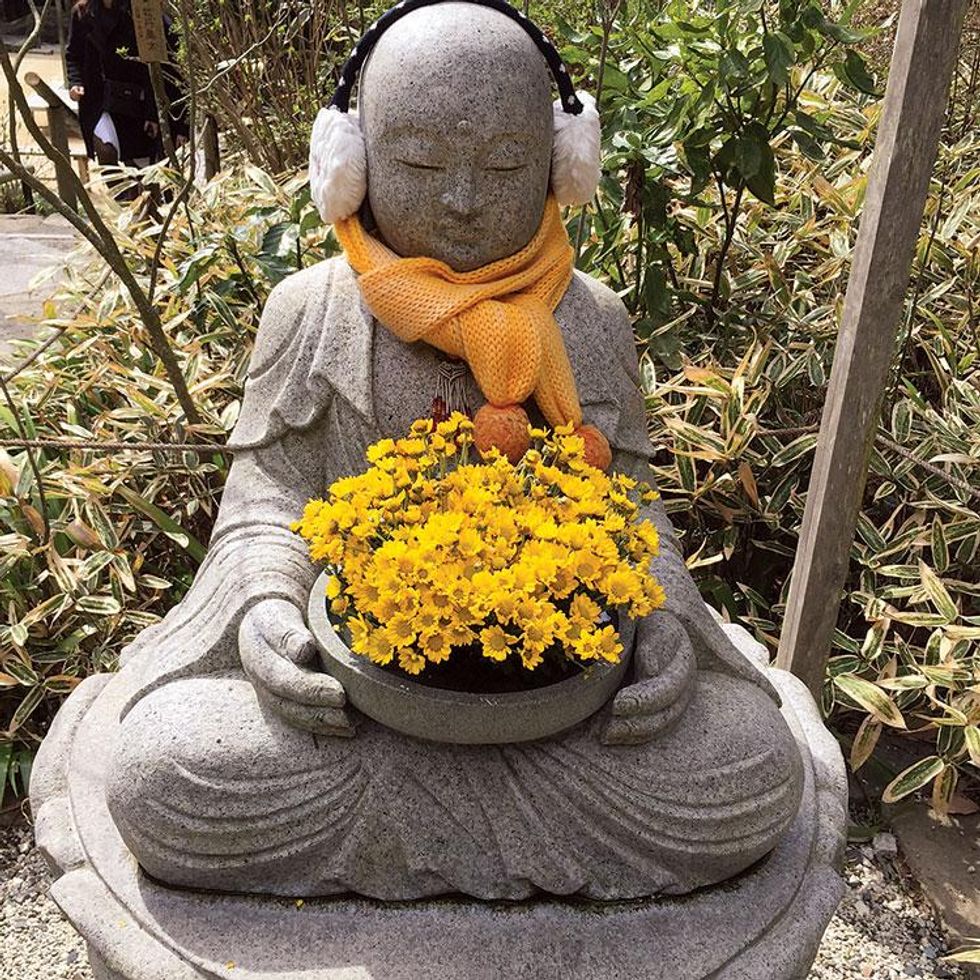
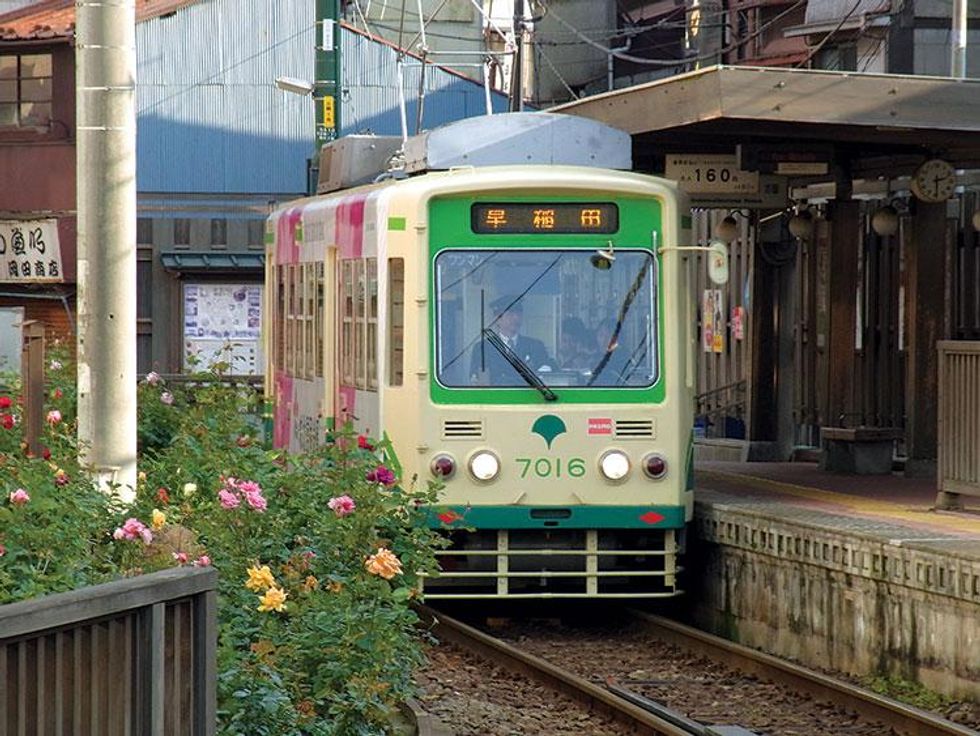

Courtesy of Yasufumi Nishi / JNTo (1,2, and 6); courtesy of muji (3); courtesy of June Thomas (4,5 and 7)